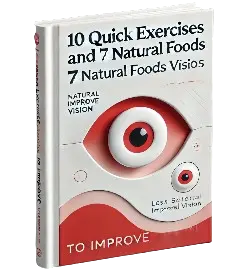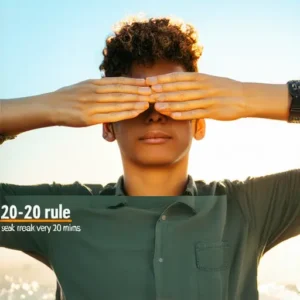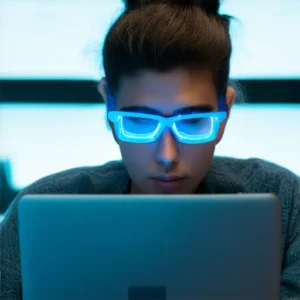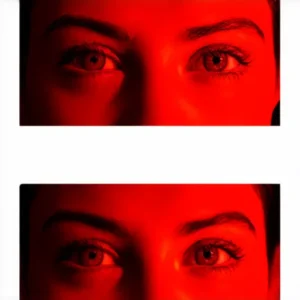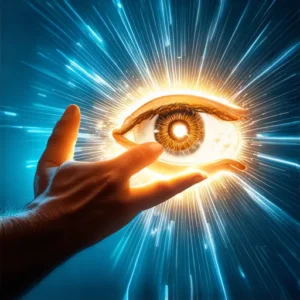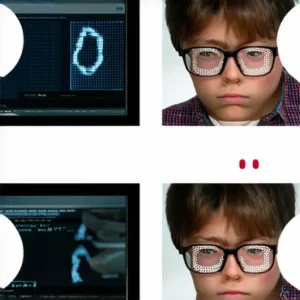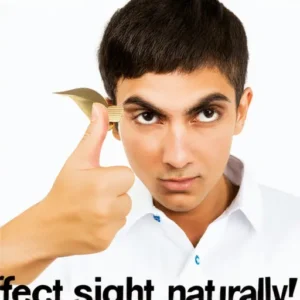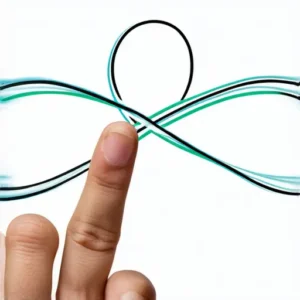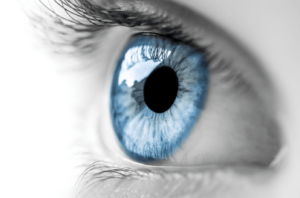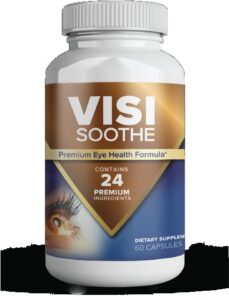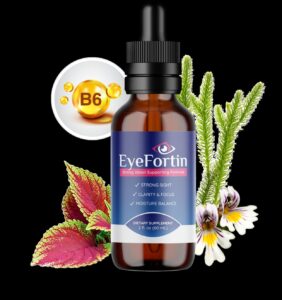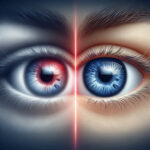Reverse Bad Eyesight: Myths vs. Facts You Need to Know
Can You Really Reverse Bad Eyesight? Let’s Separate Fact from Fiction
Ever wondered if you can actually reverse bad eyesight, or if it’s just another internet myth? You’re not alone. With so many conflicting claims out there—from “miracle” vision exercises to promises of ditching your glasses forever—it’s enough to make anyone’s head spin. The truth? While complete vision reversal isn’t always possible, there are ways to improve and protect your eyesight. Let’s cut through the noise and look at what really works.
What Does “Reversing Bad Eyesight” Actually Mean?
When people talk about reversing vision problems, they’re usually hoping to see better without relying on glasses, contacts, or surgery. This could mean reducing nearsightedness (myopia), farsightedness (hyperopia), or astigmatism through various approaches. But here’s the thing—not all vision issues respond the same way to treatment.
Why So Many Vision Myths Exist
Eye health seems to attract more than its fair share of misinformation. Maybe it’s because we all want to believe we can improve our vision naturally. From old wives’ tales about carrots giving you night vision to TikTok trends about eye yoga, it’s hard to know what to trust. The problem? Many myths contain a kernel of truth, making them extra convincing—and extra frustrating to debunk.
Why Facts Matter for Your Eye Health
Believing the wrong information isn’t just disappointing—it could actually delay proper treatment. That’s why we’re sticking to science-backed approaches that offer real results (not just false hope).
The Science Behind Vision Improvement: What Actually Works?
Let’s settle the debate: Can you reverse bad eyesight naturally? Science gives us some clear answers—and a few surprises.
Vision Myths You Can Stop Believing
- “Eye exercises can replace your glasses.” Sorry, but no—while they might help with eye strain, they won’t fix your prescription.
- “Superfoods will give you 20/20 vision.” A healthy diet supports eye health, but it won’t undo years of nearsightedness.
- “Screens are ruining your eyes permanently.” They cause fatigue, sure, but they’re not dooming you to a lifetime of bad vision.
What Research Says About Natural Vision Improvement
Here’s some good news: Spending more time outdoors can actually slow myopia progression in kids. For adults? The picture isn’t as clear. Some vision therapy techniques help with specific issues like eye teaming problems, but your mileage may vary.
What You Can (and Can’t) Reverse
- Possible improvements: Eye strain, mild myopia (sometimes), and certain focusing issues
- Needs professional help: High prescriptions, cataracts, glaucoma, or macular degeneration
Natural Ways to Support Better Vision
While you might not completely reverse bad eyesight naturally, these science-backed strategies can help your eyes feel and function better.
Eat Your Way to Healthier Eyes
Load up on leafy greens, fatty fish, and colorful fruits—they’re packed with vision-friendly nutrients like lutein and omega-3s. Think of them as fuel for your eyes, not a magic cure.
Do Eye Exercises Help?
The 20-20-20 rule (look 20 feet away for 20 seconds every 20 minutes) is golden for digital eye strain. But those claims about exercises reshaping your cornea? Yeah, that’s more fantasy than fact.
Smart Lifestyle Tweaks
- Get outside: Natural light helps kids’ developing eyes (and feels great for adults too)
- Kick the habit: Smoking dramatically increases risks for cataracts and AMD
- Control health conditions: Unmanaged diabetes can literally change how you see the world
When to Consider Medical Options
Sometimes, natural methods aren’t enough—and that’s okay. Modern eye care offers some impressive solutions.
Vision Correction Surgeries
LASIK and PRK can be life-changing for the right candidates, though they’re not for everyone (your eye doctor can help you decide).
Glasses and Contacts: Not Just Crutches
While they don’t “fix” your vision, today’s options are smarter than ever. Special overnight contacts can even temporarily reduce myopia while you sleep.
The Future of Eye Care
From myopia-control eye drops for kids to cutting-edge gene therapies, the next decade promises exciting advances in vision treatment.
Busting Common Vision Myths Once and For All
“Carrots Give You Super Vision”
Reality check: They’re great for eye health, but you’d need to eat a truckload daily to replace your glasses.
“You Can Naturally Fix Severe Nearsightedness”
For high prescriptions, medical intervention is usually needed—but early prevention makes a big difference.
“Screens Are Melting Your Eyes”
They won’t permanently damage your vision, but your eyes might feel like they’ve run a marathon after a Netflix binge. Take breaks!
Protecting Your Vision for the Long Haul
Simple Habits for Healthier Eyes
- Light your workspace properly (no more reading in dim light!)
- Match your screen brightness to your environment
- Blink often—seriously, we all forget to do this
Why Eye Exams Matter More Than You Think
Many serious eye conditions sneak up silently. Regular check-ups catch problems early when they’re most treatable.
The Blue Light Debate
While blue light won’t blind you, it can mess with your sleep. Try night mode or blue light glasses if screens leave you feeling wired.
Real People, Real Results
When Natural Methods Work
Some studies show kids maintaining stable prescriptions with more outdoor time and specialized contacts—encouraging for parents!
Success Stories Worth Considering
People with mild vision issues often report improvements after consistent eye care routines, though results vary.
The Takeaway?
While not everyone can completely reverse bad eyesight, combining smart strategies gives you the best shot at improvement.
The Bottom Line on Vision Improvement
Key Things to Remember
- Natural methods support eye health but have limits
- Medical options exist when you need more help
- Prevention is always easier than reversal
Keeping It Real
Let’s be honest—miracle cures are rare in eye care. But with realistic expectations and professional guidance, you can absolutely take meaningful steps toward better vision. Your eyes work hard for you every day—don’t they deserve the best care you can give them?
Have you tried any vision improvement methods? We’d love to hear about your experiences in the comments!
Restore Eyesight Without Surgery: The Ultimate Guide
Can You Really Improve Your Eyesight Without Surgery?
Let’s be honest—when you hear about restoring eyesight without surgery, it sounds like one of those too-good-to-be-true claims. We’ve all been told that glasses, contacts, or LASIK are the only real solutions for blurry vision. But what if you could actually strengthen your eyes naturally? Turns out, research—and countless success stories—show that simple lifestyle tweaks, eye exercises, and the right foods can make a noticeable difference in your vision.
How Non-Surgical Vision Improvement Actually Works
Think of your eyes like muscles—they get stronger with the right training. Whether you’re dealing with nearsightedness, farsightedness, or astigmatism, targeted techniques can help. No, it’s not a magic fix (results vary!), but many people have ditched their glasses or reduced their prescription by giving their eyes the care they need.
Busting the Biggest Myths About Natural Vision Improvement
- Myth: “Bad vision is permanent.” Truth: Your brain and eyes can adapt thanks to neuroplasticity—it’s all about consistent practice.
- Myth: “Eye exercises are a waste of time.” Truth: Science shows specific exercises sharpen focus and reduce eye strain.
- Myth: “Surgery is the only real solution.” Truth: While surgery helps some, natural methods work for many—without the risks or high costs.
Why Skip Surgery? Here’s What’s Driving the Shift
Between rising healthcare costs and potential side effects, more people are exploring natural options. Bonus? These methods often improve overall eye comfort, sleep, and even reduce headaches—not just clarity.
What’s Really Causing Your Blurry Vision (And How to Fix It)
To fix your vision naturally, you’ve got to understand what’s messing with it in the first place. Here’s the breakdown:
Aging Eyes Aren’t Doomed—Here’s How to Fight Back
Presbyopia (that annoying “arm’s-length” reading phase) happens to everyone, but you can slow it down:
- Exercise those eyes: Simple drills keep eye muscles flexible.
- Eat the rainbow: Antioxidant-packed foods combat damage.
- Wear sunglasses: UV protection isn’t just for skin.
Digital Eye Strain: The Sneaky Vision Killer
Staring at screens all day? No wonder your eyes feel fried. Try these fixes:
- The 20-20-20 rule: Every 20 minutes, stare at something 20 feet away for 20 seconds.
- Dial down screen glare—brightness matters more than you think.
- Blue light filters aren’t hype—they really help.
You Are What You Eat (And So Are Your Eyes)
Skimp on key nutrients, and your vision pays the price. Load up on:
- Carrots and sweet potatoes (hello, beta-carotene).
- Kale and spinach (lutein and zeaxanthin protect against blue light).
- Salmon and walnuts (omega-3s keep eyes from drying out).
Your At-Home Plan to Sharper Vision
Ready to take action? Here’s exactly how to improve your eyesight naturally.
Eye Exercises That Actually Work
Do these daily—consistency is key:
- Palming: Warm your hands, cup them over closed eyes, and breathe deeply for 5 minutes (instant relaxation!).
- Pen Pushups: Hold a pen at arm’s length, slowly bring it to your nose while focusing, then back out.
- Figure Eights: Trace an imaginary 8 with your eyes—sounds silly, but it boosts coordination.
Eat This for Better Vision
Your grocery list for happy eyes:
- Vitamin A: Eggs and dairy for night vision.
- Omega-3s: Flaxseeds or fatty fish to fight dryness.
- Zinc: Chickpeas and pumpkin seeds help vitamin A do its job.
Small Changes, Big Results
Easy habits with major payoffs:
- Sleep 7-9 hours—your eyes heal overnight.
- Drink water like it’s your job (dry eyes hate dehydration).
- If you smoke, quit—it skyrockets cataract risks.
The Science Behind Natural Vision Improvement
Is this stuff legit? Let’s geek out on the research.
The Bates Method: Old-School but Effective
Developed in the 1920s, it’s all about relaxation and retraining:
- Sunning: Close your eyes and face sunlight (yes, really).
- Near-Far Switching: Alternate focus between close and distant objects.
What Studies Say
Kids who play outside more have lower myopia rates (Ophthalmology, 2012). Adults with convergence insufficiency improved with exercises (Investigative Ophthalmology). The proof is building.
Your Brain Can Rewire Your Vision
Neuroplasticity means your visual system can improve with practice—like learning a skill. That’s why daily effort matters.
Superfoods and Supplements for Crystal-Clear Vision
Your plate is your first line of defense.
Must-Have Nutrients for Eye Health
- Vitamin C: Bell peppers and oranges prevent cataracts.
- Vitamin E: Almonds shield eyes from damage.
- Lutein & Zeaxanthin: Leafy greens are nature’s blue light blockers.
Vision Superstars to Add to Your Diet
- Blueberries (boost night vision).
- Eggs (sulfur keeps lenses clear).
- Turmeric (fights inflammation in retinal tissue).
Do Supplements Help?
AREDS2 supplements slow macular degeneration in high-risk cases. But food comes first—talk to your doc before popping pills.
Daily Habits for Lifelong Sharp Vision
Vision care isn’t a one-time fix—it’s a lifestyle.
Set Up Your Space for Eye Comfort
- Soft ambient lighting > harsh overhead lights.
- Keep screens at arm’s length and eye level.
Beyond the 20-20-20 Rule
- Blink often (sounds obvious, but we forget!).
- Artificial tears rescue dry eyes fast.
Sleep and Water: Your Eyes’ Best Friends
Dehydration = scratchy eyes. Poor sleep = slower repair. Prioritize both.
Alternative Approaches Worth Trying
Beyond the basics, some swear by these:
Acupressure for Eye Strain
Gentle pressure near the inner eye (BL-1 point) may boost circulation.
Ayurvedic Eye Washes
Triphala-soaked water (cooled) as an eye rinse is an ancient trick for tired eyes.
Blue Light Glasses: Help or Hype?
They won’t cure vision problems, but they cut glare during Netflix binges.
Your Vision, Your Control
Surgery isn’t the only path to clearer sight—you’ve got options.
Quick Recap: Natural Vision Boosters
- Exercise your eyes daily.
- Feed them the right nutrients.
- Protect them from strain and sun.
Final Thought: Be Patient, Stay Consistent
Your eyes didn’t weaken overnight—they won’t heal overnight either. But stick with it, and you might just see the difference (literally!). Have you tried natural vision improvement? Share your story below!
Try Red Light to Improve Eyesight in Just 3 Minutes a Day
Can Red Light Therapy Actually Improve Your Eyesight?
What if you could give your vision a boost in just 3 minutes a day—no doctor’s visits, no pricey procedures, just the power of light? It might sound like science fiction, but recent studies suggest that red light therapy could be a game-changer for retinal health and age-related vision decline. Let’s explore how this works and whether the science holds up.
Red Light Therapy 101: Vision Edition
You’ve probably heard of red light therapy for skin or muscle recovery, but its benefits might extend to your eyes too. This treatment uses specific wavelengths of red or near-infrared light to give your cells an energy boost. Researchers believe it can rev up mitochondrial activity in retinal cells, potentially turning back the clock on aging eyes and digital eye strain.
Why Your Eyes Love Red Light
Here’s the deal: Your retinal cells are energy hogs. As we age (or binge-watch our favorite shows), these power-hungry cells start slacking off. That’s where 670nm red light comes in—it penetrates deep into the eye, giving your mitochondria (those tiny cellular batteries) a much-needed recharge. Think of it like plugging in your phone overnight, but for your vision.
The 3-Minute Miracle
In a 2020 study published in the Journals of Gerontology, participants who used 670nm red light for just three minutes daily saw real improvements—better color contrast sensitivity and improved night vision. The best part? No marathon sessions required. Just a quick daily zap seems to be enough to kickstart cellular repair.
Why Our Eyes Need Help (And What’s Not Working)
From squinting at restaurant menus to white-knuckling night drives, vision problems affect nearly everyone as we age. But are our current solutions missing the mark?
Why Your Eyesight Might Be Fading
- Father Time: After 40, retinal cells start slowing down like a tired marathon runner.
- Screen addiction: All that blue light from devices is like junk food for your eyes.
- Circulation issues: When blood flow drops, your retinal cells get hangry for oxygen.
Old Solutions vs. New Thinking
Glasses and contacts are like putting a Band-Aid on the problem—they help you see better but don’t fix the underlying cellular issues. Surgeries can be effective but come with risks. Red light therapy? It’s like giving your eyes a daily vitamin at the cellular level.
Why Red Light Stands Out
Unlike harsh blue light that stresses your retina, 670nm red light is like a gentle massage for your eye cells—soothing and restorative rather than draining.
The Science Made Simple
Let’s break down how this works without putting you to sleep (unlike your 8pm biology class).
Mitochondria: Your Eye’s Power Plants
These tiny organelles in your retinal cells work harder than a barista on Monday morning. When they start slacking, your vision pays the price. Red light gives them a caffeine-like jolt to get back in the game.
Why 670nm Hits the Sweet Spot
Not all red light is created equal. 670nm is the Goldilocks wavelength—it penetrates deep enough to matter but won’t cause damage like shorter wavelengths might.
What the Research Says
Beyond the 2020 study, a 2023 University College London trial showed vision improvements up to 22% after 12 weeks of red light therapy. Even animal studies show it helps calm retinal inflammation—like aloe vera for sunburn, but for your eyes.
Why You Might Want to Try Red Light Therapy
What’s in it for you? Quite a bit, actually:
- Fights aging: Puts the brakes on macular degeneration.
- Eases screen strain: Helps your eyes bounce back from Zoom marathons.
- Sharpens details: Makes colors pop and contrasts clearer—great for artists and night drivers.
Your Red Light Routine Made Easy
Ready to give it a shot? Here’s how to do it right.
Picking Your Device
Look for:
- LED devices that specifically emit 670nm light
- FDA-cleared or CE-marked for eye safety
- Gentle intensity (leave the lasers to the professionals)
The 3-Minute Daily Habit
- Find a cozy spot in a dim room
- Hold the device about a foot from your closed eyelids
- Relax for three minutes (perfect time to practice deep breathing!)
Playing It Safe
- Never look directly at the light (common sense, but worth repeating)
- Start slow if you’re sensitive
- Check with your eye doctor if you have existing conditions
Your Red Light Questions Answered
Is This Actually Safe for My Eyes?
At 670nm and proper intensity, absolutely—when used as directed. This isn’t about staring into spotlights.
When Will I Notice Changes?
Some people feel less eye strain within days, but retinal improvements might take a month or three—think of it like growing out a haircut.
Can I Ditch My Glasses?
Sorry, no. This supports eye health but won’t correct nearsightedness or astigmatism. It’s a teammate, not a replacement.
Real People, Real Results
Take Sarah, 52: “After two months, I could actually read street signs at night again—something I hadn’t done since my 40s.”
Dr. Lee, optometrist: “While we need more long-term data, red light therapy shows real potential as part of a comprehensive eye health strategy.”
The Bottom Line
Red light therapy isn’t a miracle cure, but it’s one of the most promising tools we have for maintaining vision health naturally. With just three minutes a day, you could be giving your retinal cells the energy boost they’ve been craving. After all, shouldn’t something as precious as your eyesight get a little daily TLC?
Tried red light therapy? We’d love to hear about your experience in the comments!
Boost Your Vision: How Red Light Improve Eyesight
Can Red Light Actually Improve Your Eyesight? Let’s Find Out
Ever stared at a sunset and wondered if those warm red hues could do more than just look beautiful? Turns out, they might be giving your eyes a boost without you even realizing it. With most of us glued to screens and age-related vision issues on the rise, scientists are turning to an unexpected hero: red light therapy. Recent studies suggest certain red light wavelengths could help sharpen your vision, ease digital eye strain, and even slow conditions like macular degeneration. But is this too good to be true? Let’s take a closer look.
Red Light Therapy 101: Not Just for Skin Anymore
You might know red light therapy (RLT) as that trendy skin treatment, but it’s making waves in eye care too. This gentle, non-invasive approach uses specific red and near-infrared light to give your cells a pep talk—especially the mitochondria in your retina (think of them as tiny cellular batteries that could use a recharge).
The Eye-Opening Science Behind It
Here’s the fascinating part: our eyes are packed with photoreceptor cells that run on mitochondrial energy. As we age or binge-watch our favorite shows, these power plants start slacking off. But red light at 650–670 nm (that’s the sweet spot) dives deep into retinal tissue, giving mitochondria a much-needed energy drink while fighting oxidative stress—two major players in keeping your vision crisp.
Why Your Eyes Need This Now More Than Ever
Consider this: 12 million Americans battle macular degeneration, and nearly all of us know the sting of screen fatigue. In our search for drug-free solutions, red light therapy is emerging as a simple way to protect—and potentially enhance—our precious eyesight.
How a Dash of Red Light Could Change Your Vision
Let’s break down exactly how this works—because understanding the “why” makes the “should I try it?” much clearer.
Your Retina’s Power Plants Need a Boost
Those hardworking mitochondria in your retinal cells? They’re constantly converting light into signals for your brain. When they get tired (thanks, aging and screens), your vision pays the price. Red light acts like a cellular jump-start, helping them work smarter, not harder.
The Repair Process: Light at Work
When red light photons meet cytochrome c oxidase (your mitochondria’s favorite enzyme), magic happens:
- Energy production skyrockets—we’re talking up to 200% more ATP (thanks to those 2018 UCL studies)
- Inflammation in retinal tissue takes a nosedive
- Damaged photoreceptors get repair signals
Not All Red Light Is Created Equal
Here’s the key: 670 nm hits the Goldilocks zone—deep enough to help without causing heat damage. Near-infrared (800–850 nm) can go deeper but requires more caution—like using oven mitts for your eyes.
Real Benefits Backed by Real Science
This isn’t just lab talk—people are seeing measurable differences. Literally.
Your Retina on Red Light
A 2021 Scientific Reports study had participants using 670 nm light just 3 minutes daily. The result? A 22% boost in color contrast vision—that’s huge for reading menus in dim light or spotting deer on nighttime drives.
Bye-Bye, Screen Squint
For those of us living on laptops and smartphones, quick red light sessions can:
- Reduce that annoying blurry-dry-eye feeling by stabilizing tear film
- Help your eyes bounce back faster from marathon Zoom sessions
Putting the Brakes on Age-Related Decline
Perhaps most exciting? Research in the Journals of Gerontology shows red light might slow AMD and diabetic retinopathy by shielding RPE cells—your retina’s protective layer.
Who Stands to Benefit Most?
This isn’t just for those with diagnosed conditions. You might be surprised who could see improvements:
For Those Noticing Age-Related Changes
A 2020 Cambridge pilot study found early AMD patients using RLT had slower drusen buildup—those yellow deposits that signal AMD progression.
Screen Zombies Unite!
Tokyo University researchers found office workers using red light devices reported 40% less eye strain after just two weeks. Your 3pm eye-rubbing sessions could become history.
High-Risk Groups
While not a cure-all, RLT’s anti-inflammatory effects may support traditional glaucoma and diabetic retinopathy treatments by improving optic nerve blood flow.
Your Starter Guide to Red Light Therapy
Ready to give it a shot? Here’s how to do it right.
Choosing Your Tool
Look for:
- FDA-cleared red light goggles (Luminopia’s a popular pick)
- Panel lights with precise 670 nm settings
- Handheld wands for spot treatment (with proper eye protection)
Timing Is Everything
The research-backed sweet spot:
- 3–5 minutes per eye, once or twice daily
- Morning sessions sync best with your body’s natural rhythms
- Stick with it for a month to really notice changes
Playing It Safe
While generally low-risk, remember to:
- Avoid staring directly at intense light sources
- Don’t overdo the session length
- Use only eye-specific devices or proper protection
What the Research Really Says
Let’s cut through the hype with cold, hard science.
The Big Picture
A comprehensive 2023 review of 17 studies confirmed 670 nm light significantly improved vision in adults over 40, with benefits lasting up to a week post-treatment.
Real People, Real Results
A Florida optometry clinic reported 68% of patients using daily RLT needed reading glasses less often after three months. That’s life-changing for many.
What’s Next in Light Therapy
Scientists are currently exploring:
- Combining red light with blue light filters
- Custom wavelength plans based on individual needs
- Using it to help slow childhood myopia progression
Separating Fact from Fiction
Let’s tackle some common misconceptions head-on.
Is There a Downside?
When used properly, side effects are rare—maybe temporary mild headache or light sensitivity, but these usually pass quickly.
Can It Replace My Glasses or Meds?
Nope—think of it as your vision’s gym membership, not a replacement for prescribed treatments. Always consult your eye doc.
The Truth About Miracle Claims
While promising, RLT won’t fix severe refractive errors or replace cataract surgery. Keep expectations realistic.
The Bottom Line
The verdict? Targeted red light exposure could be vision care’s next big thing. By giving retinal cells an energy boost, we might finally have a natural way to fight both digital eye strain and age-related decline.
Quick Recap: Why Red Light Deserves Your Attention
- 670 nm light supercharges retinal mitochondria
- Just a few minutes daily may sharpen contrast vision and reduce strain
- Safe for most adults when following guidelines
Making It Part of Your Routine
As research continues, red light therapy might become as standard as dental cleanings for eye health. Why not ask your eye doctor about it? Your future self—reading menus without squinting—will be glad you did.
Can You Really Improve Eyesight? 5 Proven Ways
Can You Actually Improve Your Eyesight Without Surgery or Glasses?
Let’s be real – we’ve all squinted at our phones a little too long and wondered: “Is there a natural way to fix my vision?” Between sketchy internet advice and old wives’ tales, it’s hard to know what really works. But here’s some good news – science says yes, you can improve your eyesight naturally with some smart lifestyle tweaks.
Sure, genetics and aging play their part, but don’t underestimate how much your daily habits matter. Whether you’re battling eye strain from too much screen time or just want to keep your vision sharp as you get older, these research-backed tips can make a real difference.
How Your Eyes Actually Work (And How to Help Them)
Think of your eyes like high-tech cameras – they’ve got muscles that need exercise, nerves that need protection, and they’re constantly processing light. The cool part? Just like you can strengthen your body at the gym, you can boost your eye health with the right nutrients and habits.
Vision Myths We Need to Stop Believing
Quick reality check before we continue: No, eating a bag of carrots won’t give you superhero vision (though they do help). And no, wearing glasses won’t make your eyes “lazy” – that’s like saying using crutches makes your legs weaker. Real vision improvement comes from a balanced approach that we’ll break down for you.
5 Science-Backed Ways to Boost Your Vision Naturally
Ready to give your eyes some love? Here are the most effective natural methods that actually work.
Eat Your Way to Better Eyesight
Your eyes are hungry for specific nutrients. Make sure your diet includes:
- Vitamin A – The vision vitamin (hello, sweet potatoes and spinach).
- Lutein & Zeaxanthin – Nature’s blue light blockers (load up on kale and eggs).
- Omega-3s – The ultimate dry eye remedy (salmon and walnuts are great sources).
Fun fact: People who eat Mediterranean-style diets tend to have healthier eyes as they age.
Don’t Forget to Drink Up
Dehydrated body = dehydrated eyes. If you’re constantly rubbing your eyes or dealing with blurry vision, you might just need more water. Pro tip: Cut back on coffee – it’s basically a dehydration machine.
Give Your Eyes a Workout
Your eye muscles need exercise too! Try the 20-20-20 rule: Every 20 minutes, look at something 20 feet away for 20 seconds. It’s like a mini vacation for your strained eyes.
Simple Daily Habits for Healthier Eyes
Little changes can make a big difference in how well you see.
Screen Time Survival Guide
If you’re glued to screens all day (who isn’t?), remember to blink! We blink about half as much when staring at devices, which leads to dry, tired eyes. That 20-20-20 rule we mentioned? Your new best friend.
Sunglasses Aren’t Just a Fashion Statement
UV rays don’t just damage your skin – they’re cooking your eyes too. Always grab sunglasses with 100% UV protection, even when it’s cloudy. Your future self will thank you.
If You Smoke, Here’s Another Reason to Quit
Smoking doubles your risk of cataracts and messes with your retina’s blood supply. The good news? Quitting can help reverse some of the damage over time.
Dealing With Digital Eye Strain (Because Screens Aren’t Going Away)
Let’s face it – we’re not giving up our devices anytime soon. Here’s how to protect your eyes in our screen-obsessed world.
The Truth About Blue Light
That eerie glow from your phone at night isn’t just keeping you awake – it might be damaging your eyes. Try blue light filters or special glasses after sunset.
Set Up Your Screens the Right Way
Adjust your screen brightness to match the room, bump up the text size so you’re not squinting, and position your monitor at arm’s length, slightly below eye level. Your neck will thank you too.
Sleep: Your Eyes’ Secret Repair Time
Your eyes do their best healing while you’re catching Z’s – don’t cheat them out of this crucial recovery time.
Why Beauty Sleep is Also Eye Health Sleep
During deep sleep, your eyes replenish tears and repair damage. Skimp on sleep regularly, and you’re looking at higher risks for dry eyes and other problems.
Sleep Hacks for Better Vision
Stick to a regular bedtime, ditch screens an hour before bed, and sleep in total darkness. An eye mask can be a game-changer if you’ve got streetlights or other light pollution.
When Lifestyle Changes Aren’t Enough
Sometimes you need to bring in the big guns for vision improvement.
Glasses and Contacts: Nothing to Be Ashamed Of
If you’re constantly squinting or getting headaches, it might be time for an eye exam. Proper prescription lenses prevent unnecessary strain – think of them as tools, not crutches.
The LASIK Lowdown
LASIK can be life-changing for many people by reshaping the cornea, but it’s not for everyone. Thin corneas or certain eye conditions might rule you out.
Supplements Worth Considering
Bilberry extract and certain vitamins might give your eyes an extra boost, especially as you age. But always check with your doctor before starting anything new.
Vision-Friendly Habits for Life
Think long-term – these habits will keep your eyes healthy for decades.
Get Moving for Better Eyesight
Regular exercise improves blood flow to your eyes, delivering oxygen and nutrients. Just 30 minutes a day can make a difference.
Chill Out for Clearer Vision
Stress tenses up your eye muscles, making focus harder. Try meditation, yoga, or simple breathing exercises to relax your whole body – eyes included.
Your Action Plan for Better Vision
Improving your eyesight isn’t about quick fixes – it’s about smart, consistent care.
The Vision Improvement Cheat Sheet
- Load up on eye-friendly foods (think colorful veggies and fatty fish)
- Practice the 20-20-20 rule religiously
- Protect your peepers from sun and screens
- Sleep like your vision depends on it (because it does)
- Don’t skip those annual eye exams
Remember: Small Changes Add Up
Your eyesight is priceless. By incorporating these proven vision boosters into your routine, you’re not just seeing better today – you’re investing in clear vision for years to come. Start with one change today and build from there!
What’s your biggest eye health challenge? Share your thoughts below – we’d love to hear what works for you!
Power Increase Eye: The Secret to Sharper Sight
Want Sharper Vision Without Glasses? Try These Power-Boosting Eye Tips
Ever find yourself squinting at street signs or rubbing tired eyes after a long day? You’re not alone. The good news? There are natural ways to strengthen your vision through what eye experts call power increase eye techniques. These aren’t magic tricks – they’re science-backed methods to train your eyes just like you’d train any other muscle. Whether you’re battling blurry vision, digital eye strain, or just want to keep your peepers in top shape, these strategies can make a real difference.
Decoding “Power Increase Eye”
Think of power increase eye as a workout plan for your vision. It’s all about improving your eyes’ natural focusing ability through targeted exercises, smart nutrition, and healthy habits. Unlike glasses that just compensate for weak vision (like crutches for your eyes), these techniques help build lasting strength from the inside out.
Why Strong Eye Muscles Matter
Here’s something most people don’t realize: your eyes contain some of the hardest-working muscles in your body. They’re constantly adjusting focus – about 100,000 times a day! When these muscles get lazy or tired, your vision pays the price. The result? That frustrating blurriness when you switch from reading your phone to looking across the room.
What You’ll Discover in This Guide
We’re going beyond the basics to give you:
- The fascinating science behind vision improvement
- Red flags that your eyes need extra support
- Simple daily habits that add up to clearer sight
- How to balance screen time with eye health
The Science of Stronger Vision
Let’s peek behind the curtain at how your eyes actually work – knowledge that’ll help you train them more effectively.
Your Eyes’ Built-In Focus System
Those tiny ciliary muscles in your eyes? They’re like the autofocus on a camera, constantly adjusting your lens shape. But just like any muscle, they can get stiff or weak if we don’t use their full range of motion. (When was the last time you really looked at something far away?) Simple exercises can keep them flexible and responsive.
Eat Your Way to Better Vision
Your eyes thrive on specific nutrients:
- Vitamin A: The night vision vitamin (carrots really do help!)
- Lutein & Zeaxanthin: Nature’s blue light blockers
- Omega-3s: Like moisturizer for your dry eyes
Vision Myths Busted
Let’s clear up some common misconceptions:
- Myth: Glasses make your eyes weaker
Truth: They’re like training wheels – helpful but not harmful - Myth: Eye exercises can fix cataracts
Truth: Some conditions need medical treatment
Is Your Vision Asking for Help?
Your eyes send signals when they’re struggling. Here’s how to read them.
The Blurry Blues
If text seems to swim on the page or you’re constantly adjusting your screen brightness, your eye muscles might be waving a white flag.
Night Vision Problems
Struggling with dim lighting? It could mean your eyes aren’t getting the nutrients they need or aren’t adapting well anymore.
The Screen Time Hangover
Headaches, dry eyes after Zoom marathons? That’s digital eye strain – your eyes’ version of screaming for a break.
Natural Vision Boosters That Actually Work
Ready to give your eyes some TLC? Try these eye-approved strategies.
5-Minute Eye Gym
Quick exercises for busy people:
- Palming: Warm your hands and cup them over closed eyes – instant relaxation!
- Near-Far Focus: Alternate between your phone and something across the room
- Eye Circles: Trace slow circles with your eyes to improve coordination
Vision Superfoods
Next grocery list additions:
- Sweet potatoes (even better than carrots for vitamin A)
- Eggs (the yolks contain vision-protecting nutrients)
- Almonds (packed with eye-friendly vitamin E)
The 20-20-20 Rule
Every 20 minutes, look 20 feet away for 20 seconds. It’s like a mini-vacation for your eyes!
Surviving the Digital Age With Healthy Eyes
Screens aren’t going away, but you can protect your eyes.
Blue Light Reality Check
That nighttime scrolling session? It’s confusing your brain into thinking it’s daytime. Try blue light filters or the “night mode” on devices.
Ergonomics for Your Eyes
- Keep screens at arm’s length
- Position monitors slightly below eye level
- Increase font sizes so you’re not squinting
Lifestyle Tweaks for Lasting Eye Health
Small changes, big impact over time.
Sleep – Your Eyes’ Repair Time
Ever notice how much better you see after good sleep? That’s when your eyes recharge their moisture and repair damage.
Stress Less, See Better
Stress tenses all your muscles – including eye muscles. Try this: inhale for 4 counts, hold for 4, exhale for 4. Instant relaxation!
Go Outside!
Natural light and distant views give your eyes the varied workout they crave after hours of near-focus.
When to Call in the Pros
Natural methods are great, but sometimes you need expert help.
Warning Signs Not to Ignore
Sudden vision changes, persistent pain, or seeing flashes? That’s your cue to see an eye doctor ASAP.
Beyond Glasses: Vision Therapy
Think of it as physical therapy for your eyes – customized exercises to retrain how your eyes work together.
Your Clear Vision Action Plan
Improving your eyesight is a marathon, not a sprint. Start with one or two new habits this week – maybe the 20-20-20 rule or adding more leafy greens to your meals. Remember, your eyes work hard for you every day. Isn’t it time you returned the favor?
Pro Tip: Bookmark this page and try one new technique each week. Your future self (with clearer vision) will thank you!
Try Perforated Glasses to Improve Eyesight Without Surgery
Perforated Glasses: A Simple Way to Sharpen Your Vision Without Surgery
Tired of depending on prescription glasses or dreading the cost of laser eye surgery? Perforated glasses could be your game-changer. These nifty little helpers—also called pinhole glasses—use a clever trick to reduce eye strain and boost focus, all without lenses or scalpels. Let’s dive into how they work, who they’re best for, and whether they might be your ticket to clearer vision.
Perforated Glasses 101: How They Work
Imagine glasses with hundreds of tiny pinholes instead of lenses—that’s essentially what perforated glasses are. Made from opaque plastic or metal frames, they work like a camera aperture, filtering light to help your eyes focus naturally. No fancy lens prescriptions here—just physics doing its thing.
The Science Made Simple
Here’s the cool part: those tiny holes block scattered light, forcing your eyes to focus directly on what you’re looking at. It’s why people with mild nearsightedness or farsightedness often notice things look sharper when they wear them.
Pinhole Glasses vs Regular Glasses: What’s the Difference?
- Pinhole Glasses: Hundreds of small holes (about the size of a pinhead) do all the work
- Traditional Glasses: Use curved lenses to bend light—a completely different approach
What Research Says
Studies (like one in the Journal of Ophthalmology) show these glasses can temporarily sharpen vision by reducing blur. They’re not a magic cure, but they can help—especially if your vision issues are mild.
Why People Are Choosing Perforated Glasses
If the thought of eye surgery makes you squeamish, here’s why these might appeal to you:
Zero Risk, All Reward
No lasers, no recovery time—just pop them on when you need clearer vision. Perfect if you’re not ready for (or can’t have) procedures like LASIK.
Kind to Your Wallet
At a fraction of the cost of prescription glasses or surgery, they’re an affordable way to test the waters.
Great for Temporary Use
Reading, computer work, or anytime you need a quick focus boost—they’re like training wheels for your eyes.
Who Benefits Most?
For Nearsighted Folks
If distant objects look blurry, pinhole glasses might bring them into sharper focus.
Helping With Farsightedness
They can sometimes help with close-up tasks, though results vary.
The Astigmatism Question
Unfortunately, they’re less effective here since astigmatism involves more complex eye shape issues.
Unexpected Perks You’ll Love
- Bye-bye, eye strain: They cut screen glare like a champ
- Sharper focus: Helps your eyes zero in on what matters
- Throw them in your bag: Lightweight and always ready when you are
Getting the Most From Your Glasses
Start Slow
Begin with 15-30 minutes daily and work your way up—your eyes need time to adjust.
Try Some Eye Yoga
Combine them with simple exercises (like focusing near-to-far) for better results.
When to Take Them Off
Skip them for driving or anything requiring full peripheral vision—those tiny holes limit side vision.
The Not-So-Perfect Side
- Tunnel vision effect: You’ll lose some side visibility
- Not a forever fix: They won’t correct serious vision problems
- Weird at first: Some people feel disoriented initially
Your Top Questions, Answered
Can I Ditch My Regular Glasses?
Nope—think of these as a helpful tool, not a replacement.
How Fast Do They Work?
Some see improvement immediately, but regular use works best.
Okay for Kids?
Generally yes, but check with an eye doctor first.
The Bottom Line
Perforated glasses offer a fascinating, low-risk way to give your vision a boost. While they’re not for everyone (or every situation), they’re worth trying if you want to reduce eye strain or experiment with natural vision improvement. Start slow, pay attention to how your eyes feel, and remember—they’re no substitute for professional eye care when you need it.
Ever tried pinhole glasses? We’d love to hear about your experience in the comments!
Say Goodbye to Lenses – Get Perfect Sight Without Glasses
Introduction: The Dream of Perfect Sight Without Glasses
Let’s be honest—glasses and contacts can be a pain. From foggy lenses on a cold day to that frantic search for your frames every morning, wouldn’t it be amazing to wake up with perfect sight without glasses? Picture this: swimming without worry, playing sports without restrictions, or just enjoying your morning coffee without scrambling for your specs. Thanks to modern vision correction, this isn’t just a fantasy anymore. Whether through surgery or gentler treatments, clearer vision is within reach for more people than ever.
Why So Many People Are Saying Goodbye to Glasses
Glasses slip, smudge, and sometimes vanish into thin air. Contacts? They demand constant care and can leave your eyes feeling like sandpaper by evening. It’s no wonder people crave the freedom of natural, unrestricted vision—whether for looks, convenience, or just the joy of seeing clearly without the hassle.
Vision Correction Is Having a Moment—Here’s Why
Laser eye surgery isn’t some futuristic concept anymore—it’s mainstream. With more people discovering options like LASIK and SMILE, the demand for long-term vision solutions is skyrocketing. The global market for these procedures tells the story: we’re all tired of being tied to our lenses.
Vision Problems 101: Why Do We Need Glasses Anyway?
Before we talk fixes, let’s break down why vision goes wonky in the first place. It all comes down to how light hits your eye. When the cornea or lens isn’t shaped quite right, light doesn’t focus properly—and suddenly, the world gets blurry.
The Usual Suspects Behind Blurry Vision
- Myopia (Nearsightedness): Road signs are a mystery, but your phone’s crystal clear.
- Hyperopia (Farsightedness): Reading a menu? Suddenly your arms feel too short.
- Astigmatism: Everything’s slightly smeared, like a camera lens with a fingerprint on it.
- Presbyopia: That lovely “why is this text so small?” moment after 40.
Glasses and Contacts: Helpful, But Not a Permanent Fix
Corrective lenses bend light to compensate for these issues—but they’re like putting a bandage on the problem rather than healing it. Plus, let’s face it: they’re expensive over time and can cramp your style if you’re always on the move.
Your Options for Perfect Sight Without Glasses
The good news? Modern medicine offers real solutions that can dramatically reduce—or even eliminate—your need for glasses.
Laser Eye Surgery: The Gold Standard for Clear Vision
These procedures use precise lasers to reshape your cornea, fixing how light enters your eye. Think of it like getting your eyes “remastered” in HD.
LASIK vs. PRK: Which One’s Right for You?
- LASIK: The quick-and-easy favorite. A tiny corneal flap is lifted, the laser does its magic, and most patients see clearly by the next day.
- PRK: The “no-flap” alternative. Slightly longer recovery, but great if your corneas are on the thinner side.
SMILE: The New Kid on the Block
SMILE (Small Incision Lenticule Extraction) is like LASIK’s minimalist cousin—no flap, just a tiny incision. Less dry eye, faster healing, and great results for nearsightedness and astigmatism.
Not Ready for Surgery? Try These Glasses-Free Alternatives
If going under the laser isn’t your thing, you’ve still got options to cut down on lens dependence.
Ortho-K: Overnight Contacts That Work While You Sleep
Special rigid lenses gently reshape your corneas as you sleep, giving you clear vision all day—no surgery required. Perfect for athletes or anyone not ready to commit to a procedure.
Vision Therapy: Personal Training for Your Eyes
Custom eye exercises can help with issues like lazy eye or eye teaming problems. It’s not a cure for refractive errors, but it can make a real difference for some people.
Do Eye Exercises Actually Work?
They won’t fix nearsightedness, but techniques like the 20-20-20 rule (look 20 feet away for 20 seconds every 20 minutes) can save your eyes from digital strain. Your screen-weary peepers will thank you.
Life Without Glasses: Why It’s Worth Considering
Ditching your lenses isn’t just about convenience—it can genuinely improve your quality of life.
Everyday Perks You’ll Notice Immediately
No more panic when you can’t find your glasses. No more steamed-up lenses when you walk into a warm room. Just… clear vision, whenever you need it.
Game-Changer for Active Lifestyles
Swimmers, basketball players, yoga enthusiasts—imagine your activity of choice without glasses sliding down your nose or contacts drying out.
The Math Actually Works in Your Favor
Yes, procedures cost money upfront. But stack that against decades of new glasses, contacts, solutions, and cases? Many people break even in just a few years.
Important Considerations Before Taking the Plunge
While vision correction is safer than ever, it’s not one-size-fits-all.
Possible Side Effects (Most Temporary)
- Dry eyes (usually improves within weeks)
- Nighttime glare (like subtle halos around headlights)
- Occasionally needing a minor “touch-up” procedure
Who’s a Good Candidate—And Who Should Wait
The ideal patient? Adults with stable prescriptions and healthy eyes. Not great candidates? People with severe dry eye, certain corneal conditions, or unstable vision.
Choosing Your Path to Clear Vision
A good ophthalmologist will help match you with the right procedure based on your eyes, lifestyle, and goals. LASIK might be perfect for your neighbor, while PRK or Ortho-K could be your best bet.
Keeping Your Eyes Healthy Long After Treatment
Even with perfect vision, eye health should stay on your radar.
Eat Your Way to Better Vision
- Leafy greens: Spinach isn’t just for Popeye—it’s packed with vision-protecting nutrients.
- Fatty fish: Salmon’s omega-3s are like spa treatments for your retinas.
- Colorful veggies: Carrots and sweet potatoes keep your night vision sharp.
Surviving the Digital Age Without Eye Strain
That 20-20-20 rule we mentioned? Golden. Also: dim your screens at night, and consider blue light filters if you’re glued to devices.
Simple Habits for Lifelong Eye Health
Wear sunglasses (yes, even in winter), don’t smoke, and get regular eye checkups—because prevention beats correction every time.
Conclusion: Could This Be Your Year for Perfect Vision?
Whether through laser precision, overnight reshaping, or targeted exercises, perfect sight without glasses isn’t just possible—it’s increasingly common. The right choice depends on your eyes, your life, and what you’re comfortable with.
Quick Recap: Your Clear-Vision Cheat Sheet
- Surgical options like LASIK, PRK, and SMILE offer lasting results.
- Non-surgical routes like Ortho-K give you flexibility.
- Smart habits protect your investment in clear vision.
Your Next Step Toward Freedom
If you’re over the glasses-and-contacts shuffle, talk to an eye specialist. That first morning waking up able to see the alarm clock clearly? Priceless.
Perfect Eyesight Without Glasses: What Science Says
Introduction: Can You Really Ditch Your Glasses for Good?
Let’s be honest—who wouldn’t want perfect eyesight without glasses? Between constantly cleaning smudged lenses, dealing with fogged-up frames in winter, and that annoying moment when you can’t find your glasses first thing in the morning, it’s no wonder more people are searching for alternatives. With growing interest in natural health solutions and some promising scientific developments, the dream of clear vision without corrective lenses might not be as far-fetched as you think.
But here’s the real question: Can you actually improve your eyesight naturally? The truth is somewhere in the middle—while some methods show real promise, others are just wishful thinking. In this guide, we’ll cut through the noise, separate fact from fiction, and explore what really works when it comes to seeing clearly without glasses.
Why People Are Breaking Up With Their Glasses
Glasses and contacts have been the standard solution for vision problems like nearsightedness and farsightedness for generations. But these days, more people want permanent solutions rather than temporary fixes. Here’s why:
- The comfort factor: Let’s face it—glasses can be a pain, especially if you’re active or always on the go.
- Cost concerns: Between prescription updates, new frames, and eye exams, the expenses add up fast.
- The dependency dilemma: Some worry glasses might make their eyes “lazy” (though the science isn’t totally clear on this).
- The natural health movement: As more people embrace holistic wellness, they’re looking for drug-free ways to improve their vision.
What Science Says About Improving Your Vision
Your eyes are incredible, adaptable organs that respond to how you use them every day. While genetics play a role, your daily habits—like screen time, diet, and how you handle eye strain—make a big difference. Research shows that certain exercises, nutritional tweaks, and lifestyle changes might help you maintain or even sharpen your vision naturally.
Perfect Vision Without Glasses: Sorting Fact From Fiction
Before we get into the how-to’s, let’s bust some common myths about perfect eyesight without glasses. There’s a lot of misinformation out there, and we want you to have realistic expectations.
Vision Improvement Myths You Shouldn’t Believe
- Myth: “Eye exercises can cure nearsightedness completely.” Truth: While they might help with eye strain, they can’t physically reshape your cornea.
- Myth: “Eating carrots will give you eagle-eye vision.” Truth: Yes, carrots are great for eye health, but they’re not magic bullets for perfect vision.
- Myth: “Wearing glasses makes your vision worse over time.” Truth: Glasses correct your vision—they don’t weaken your eyes.
What Actual Research Tells Us
Some interesting studies suggest certain approaches might help:
- A 2020 study found kids who spend more time outside have lower rates of nearsightedness.
- Blue light filters might help reduce that tired, strained feeling after long screen sessions.
- While controversial, some people report success with the Bates Method for reducing their dependence on glasses.
Is Natural Vision Improvement Possible? Let’s Look at the Science
To understand if you can really improve your vision naturally, we need to look at how your eyes actually work.
How Your Eyes Adapt and Change
Your eyes focus light onto your retina, where special cells turn it into signals your brain can understand. When the shape of your eye isn’t quite right, you get vision problems. While you can’t naturally change your eye’s shape, you can support better eye function through your daily habits.
Scientific Approaches to Better Vision
Researchers have explored several interesting methods:
- Ortho-K: Special contacts you wear at night that temporarily reshape your cornea.
- Vision Therapy: Custom exercises to improve how your eyes work together.
- Atropine Eye Drops: Low doses might help slow nearsightedness in kids.
Natural Ways to Support Better Vision
While there’s no guaranteed path to perfect eyesight without glasses, these science-backed strategies might help.
Simple Eye Exercises You Can Try Today
- Palming: Warm your hands and gently cup them over closed eyes to relax tired eye muscles.
- Focus Shifting: Practice switching focus between near and far objects to improve flexibility.
- The 20-20-20 Rule: Every 20 minutes, look at something 20 feet away for 20 seconds—your eyes will thank you.
Eat Your Way to Better Eye Health
These nutrients are like superfoods for your eyes:
- Lutein & Zeaxanthin: Found in spinach and kale, they protect against age-related vision issues.
- Omega-3s: Fatty fish like salmon support your retina’s health.
- Vitamins C & E: Citrus fruits and almonds help fight damage from everyday wear and tear.
Lifestyle Tweaks for Healthier Eyes
- Screen breaks: Your eyes weren’t made to stare at pixels all day—give them regular rest.
- Get outside: Natural light seems to help kids’ eyes develop properly.
- Stay hydrated: Dry eyes can make everything look blurrier.
The Bates Method and Modern Vision Therapy
One of the most talked-about (and debated) approaches is the Bates Method.
Does the Bates Method Actually Work?
Developed over a century ago, this approach focuses on relaxation and exercises to improve vision naturally. Some people swear by it, but the scientific evidence is still limited.
Today’s Vision Therapy Options
Modern eye doctors use structured programs to help with specific issues like:
- Eyes that don’t work well together
- “Lazy eye” (amblyopia)
- Crossed eyes (strabismus)
Tech Tools That Might Help Your Vision
In our digital world, new tools are emerging to support eye health.
Vision Apps Worth Trying
- EyeLeo: Gently reminds you to take screen breaks.
- BlinQ: Offers vision training exercises right on your phone.
The Blue Light Dilemma
Too much screen time can lead to:
- Digital eye strain (think headaches and dry eyes)
- Sleep problems from disrupted melatonin
Important Limitations to Keep in Mind
While natural methods can help, they’re not miracle cures.
When You Really Need Professional Help
Serious vision problems like high prescriptions, cataracts, or glaucoma need proper medical treatment—don’t try to self-treat these conditions.
Why Regular Eye Exams Matter
Even if you’re trying natural methods, regular check-ups with your eye doctor are essential for catching problems early.
The Bottom Line: Can You Really Improve Your Vision Naturally?
While perfect eyesight without glasses might not be possible for everyone, many people can support their eye health through smart lifestyle choices. The key is combining natural approaches with professional guidance.
Key Things to Remember
- Eye exercises help with strain but won’t rewrite your prescription.
- What you eat directly impacts your eye health.
- Tech tools can help, but they’re not replacements for professional care.
Where to Go From Here
If you’re curious about natural vision improvement, start small—adjust your screen habits, try some eye exercises, and add more eye-friendly foods to your diet. And whatever you do, keep seeing your eye doctor regularly!
Have you tried any natural vision improvement methods? We’d love to hear about your experiences in the comments!
5 Exercises for One Eye Power Increase
Ever Noticed One Eye Seems Weaker? Here’s How to Fix It
You’re reading this right now—but is one eye working harder than the other? If you’ve noticed blurry vision on one side, trouble judging distances, or that weird feeling when one eye just won’t cooperate, you’re not alone. Many people deal with uneven vision strength (what eye doctors call one eye power increase). The good news? There are simple, natural ways to bring your weaker eye up to speed!
What Exactly Is a “One Eye Power Increase”?
Think of it like having one arm stronger than the other—except with your eyes. A one eye power increase means one eye struggles more with focusing, often due to conditions like lazy eye (amblyopia) or different vision prescriptions in each eye (anisometropia). Sometimes it’s just from too much screen time. The key is retraining your eyes to work as a team again.
Why You Should Care About Balancing Your Vision
When one eye does all the heavy lifting, you might experience:
- That awkward “can’t quite grab the coffee cup” depth perception fails
- Headaches after reading or computer work
- Squinting at your phone while the other eye checks out
The fix isn’t complicated—just some simple exercises to get both eyes communicating better with your brain.
What’s Making One Eye Lazier Than the Other?
Several sneaky culprits could be behind your uneven vision:
- Family traits: Thanks, Mom and Dad
- Digital eye strain: Those 10-hour Netflix binges add up
- Old injuries: Remember that baseball incident in 8th grade?
- Ignored prescriptions: That slightly different lens power you never got corrected
The Fascinating Science Behind Fixing Uneven Vision
Here’s why these exercises actually work—no magic required.
Your Eye Muscles: The Unsung Heroes
Six tiny muscles control each eye’s movements. When one eye slacks off, these muscles get out of sync—like rowers paddling at different speeds. Targeted exercises help them find their rhythm again.
Your Brain’s Amazing Ability to Adapt
Neuroplasticity is just a fancy word for your brain’s ability to rewire itself. By consistently working your weaker eye, you’re essentially teaching your brain to stop ignoring its signals. Cool, right?
Do Eye Exercises Really Work?
Absolutely! While you won’t develop superhero night vision, studies show specific exercises can significantly improve focus and coordination in the weaker eye. Consistency is key—think of it as going to the gym for your eyes.
5 Simple Exercises to Strengthen Your Weaker Eye
Ready to get started? These eye workouts take just minutes a day:
1. Palming: The Ultimate Eye Spa Treatment
This is like a mini-vacation for tired eyes:
- Rub your hands together until they’re warm (no microwaves, please)
- Gently cup them over closed eyes—no peeking!
- Breathe deeply and enjoy the darkness for 2-3 minutes
2. The Pen Tracking Challenge
Improve your eye coordination with this simple drill:
- Hold a pen at arm’s length (yes, even that chewed-up one works)
- Slowly move it side to side like a windshield wiper
- Keep your head still—only your eyes should move
3. The Near-Far Shuffle
Great for when your eyes feel “stuck” at one distance:
- Read one sentence in a book held close
- Immediately look at something across the room
- Alternate like this for a few minutes
4. Pencil Push-Ups (No Sweat Required)
Not as intense as regular push-ups, but just as effective:
- Focus on a pencil tip at arm’s length
- Slowly bring it toward your nose until it doubles
- Repeat until your eyes feel worked (but not strained)
5. The Brock String: Your Secret Weapon
This one looks weird but works wonders for depth perception:
- String some beads on a shoelace (about 5 feet long)
- Hold one end to your nose and focus on each bead
- Try to see the string form an “X” between beads
Getting the Most From Your Eye Exercises
Technique matters—here’s how to do them right:
Palming Pro Tips
Make sure no light sneaks through your fingers. Imagine you’re giving your eyes a cozy, dark cave to relax in.
Tracking Like a Pro
If you feel dizzy, slow down. Your eyes aren’t used to this workout yet!
Near-Far Hacks
Pick objects with clear edges—a book and a distant street sign work great.
Why Bother? The Awesome Benefits
Stick with it, and you’ll notice:
- Clearer vision: That blurry spot starts to sharpen up
- Better 3D vision: No more misjudging stair steps
- Less eye fatigue: Goodbye, end-of-day headaches
Common Pitfalls to Avoid
Don’t sabotage your progress:
- Overdoing it: Your eyes need breaks too
- Skipping the warm-up: Always start with palming
- Being inconsistent: 5 minutes daily beats 30 minutes weekly
Extra Credit: Boost Your Results
Combine exercises with these healthy habits:
- Eat for your eyes: Load up on spinach, carrots, and salmon
- Light it right: Ditch the glare—soft, even lighting is best
- Know when to call a pro: If no improvement after a few weeks, see an eye doctor
Wrapping Up: Your Path to Balanced Vision
Fixing a one eye power increase isn’t about quick fixes—it’s about retraining how your eyes and brain work together. With these simple exercises (done consistently), you can strengthen your weaker eye and enjoy clearer, more comfortable vision. Remember: progress takes time, so be patient with your peepers! Got any vision tips that worked for you? We’d love to hear about them!

